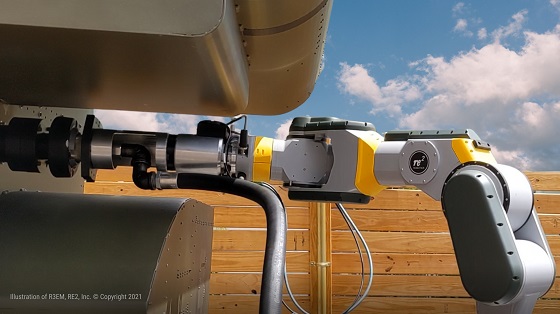RE2 Robotics has received $1 million in funding from the U.S. Army Combat Capabilities Development Command Aviation & Missile Center (AvMC) to develop a robotic system that can autonomously refuel AH-64 Apache helicopters in the field.
The project, called Remote Robotic Refueling for Extended Missions (R3EM), is being developed in support of the Autonomous and Robotic Remote Refueling Point (AR3P) program, and being managed by Naval Facilities Engineering and Expeditionary Warfare Center, located in Port Hueneme, California.
R3EM will use RE2’s proprietary perception software to control a highly dexterous RE2 robotic arm mounted onto an Unmanned Ground Vehicle (UGV), which will autonomously position and engage a fuel nozzle in the helicopter’s fuel port. Multiple perception sensors will provide 3D situational awareness, allowing the system to operate in an unstructured, outdoor environment. The system will automatically detect when fueling is complete and disconnect the fuel nozzle from the aircraft. RE2 is partnering with Pratt Miller, which is supplying its TMT-I rugged mobile base for the program.
Pilot’s command
“The R3EM program enables RE2 to apply its next-generation autonomy software and history of robotic arm expertise to a new outdoor application within the Department of Defense,” said Jorgen Pedersen, president and CEO of RE2 Robotics. “The technology being developed as a result of this aircraft servicing program strategically aligns with our ongoing expansion into the commercial aviation market.”
“Upon a pilot’s command, this system will quickly and efficiently remove a fuel line from a stored location, engage the fuel line with the Apache helicopter, and then move it back into a stowed position, completely autonomously,” said Dr. Amanda Sgroi, director of computer vision and autonomy, RE2 Robotics. “Because the system is unmanned, it will enable troops to extend the range of their missions while eliminating the need for soldiers to remain isolated at refueling stations, further reducing the size of a mission’s logistical footprint.”

